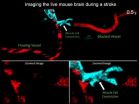(Press-News.org) A new study published in the Articles in Advance section of Transportation Science, a journal of the Institute for Operations Research and the Management Sciences (INFORMS), improves how air traffic managers cope with unexpected delays and provides them with more predictable ways to manage arrival traffic at airports with adverse weather.
The study, Incorporating Predictability into Cost Optimization for Ground Delay Programs, is by Yi Liu and Mark Hansen of the University of California, Berkeley. Ms. Liu received honorable mention for her research in the 2013 INFORMS Aviation Applications Best Student Presentation Competition.
The paper's key takeaway is that it is good to know early how late a flight will be. Ground Delay Program (GDP) decisions that recognize this are superior to those that do not, substantially reducing the cost of GDPs to flight operators. In a case study based on San Francisco International Airport, the authors reduced the cost of delays by 13 percent.
The model results can guide traffic managers on when to be optimistic, pessimistic, or neutral in their assumptions about when arrival capacity at an airport will recover.
Bad weather forces the FAA and air traffic controllers to implement GDPs. When there are delays, officials avoid asking pilots to circle their destination, which can increase fuel-related and others costs -- and endanger passengers. Instead, they delay planes on the ground until it is safe to fly, and until backups in traffic to destination airports are reduced.
In 2011, 1,065 GDPs were issued in the U.S., imposing delays totaling 26.8 million minutes to 519,940 flights. At high volume airports like San Francisco International and Newark Liberty International, GDPs are implemented as often as every other day.
The novelty of the new research is its recognition that airlines and their passengers benefit when they have accurate knowledge of flight delays ahead of time. GDP decisions are based on weather forecasts, which carry great uncertainty. The authors sought to minimize the expected cost of delay, given the information that is available when the decision is made, assigning a cost to changes in the initial plan's delay.
Ideally, for the amount of delay incurred by a GDP, the cost is least if the entire delay is predicted up front; if there are subsequent modifications, the cost increases. Previous research into reducing delay cost focused on two factors, delays that take place on the ground and those that occur in the air. This is the first research that incorporates a new factor, predictability, into reducing the cost of GDP.
Initial GDP decisions are revised if there are changes in conditions. The most common revisions are extending delays and early resumptions of flights. Prior research did not consider how changes to the initial plan affect the cost of a GDP. And previous research considered the same unit cost of ground delay regardless of whether it was part of the initial GDP plan or imposed due to an extension. In reality, unexpected extra delays require more flight operator dispatcher effort and reduce air traffic controllers' choices, which can result in greater costs compared to those in the initial plan.
To study the relationship between these GDP problems and decisions, the authors formulated the problem based on a technique known as "continuous approximation modeling." This is the first time that this class of models, though widely used in other areas of transport analysis, has been applied to this kind of problem. The models are based on a small number of parameters, highlighting the problem's essence without the distraction of extraneous details.
The analysis also highlights the interplay of GDP scope -- the geographical area where originating flights are assigned ground delays and the importance of unpredictability in determining the right "risk posture" to take in planning GDPs. The model is the first to systematically explore how the scope decision affects the optimal planned duration of a GDP.
The insights from this analysis could be used to develop a decision support tool that air traffic managers use to design more predictable GDPs.
INFORMATION:
About INFORMS
INFORMS is the leading international association for professionals in analytics and operations research (O.R.). INFORMS advances research, and develops and promotes best practices in analytics and O.R. through collaboration, knowledge sharing, and professional development. INFORMS helps business, government, and other organization professionals make better decisions to drive value to their organizations and society. Our certification program (CAP®), highly cited publications, educational meetings and conferences, continuing education, industry and process focused networking communities, competitions, and recognition provide professionals with the knowledge and connections they need to achieve ever greater value for their organizations. Further information about INFORMS, analytics, and operations research is at http://www.informs.org or @informs.
Scientists from Ludwig-Maximilians-Universitaet (LMU) in Munich and the Max Planck Institute for Quantum Optics can image the optical properties of individual nanoparticles with a novel microscope.
Nanomaterials play an essential role in many areas of daily life. There is thus a large interest to gain detailed knowledge about their optical and electronic properties. Conventional microscopes get beyond their limits when particle size falls to the range of a few 10 nanometers where a single particle provides only a vanishingly small signal. As a consequence, many investigations ...
The American Association for the Study of Liver Diseases (AASLD), in partnership with the Infectious Diseases Society of America (IDSA) and in collaboration with the International Antiviral Society-USA (IAS-USA), created online Recommendations for Testing, Managing, and Treating Hepatitis C in 2014 to aid practitioners treating patients infected with hepatitis C virus (HCV). Now an update to the Guidance, with a summary of recommendations regarding treatment with direct-acting antiviral drugs, is published in the AASLD journal, Hepatology.
HCV is a blood-borne virus ...
(Philadelphia, PA) - In a life-threatening situation, the heart beats faster and harder, invigorated by the fight-or-flight response, which instantaneously prepares a person to react or run. Now, a new study by researchers at Temple University School of Medicine (TUSM) shows that the uptick in heart muscle contractility that occurs under acute stress is driven by a flood of calcium into mitochondria--the cells' energy-producing powerhouses.
Researchers have long known that calcium enters mitochondria in heart muscle cells, but the physiological role of that process was ...
When neurons become active, they call for an extra boost of oxygenated blood -- this change in the presence of blood in different regions of the brain is the basis for functional brain scans. However, what controls this increase or decrease in blood supply has been a long-standing debate.
In a paper published on June 25 in Neuron, Yale University scientists present the strongest evidence yet that smooth muscle cells surrounding blood vessels in the brain are the only cells capable of contracting to control blood vessel diameter and thus regulate blood flow. This basic ...
Think the nest of cables under your desk is bad? Try keeping the trillions of connections crisscrossing your brain organized and free of tangles. A new study coauthored by researchers at UC San Francisco and the Freie Universität Berlin reveals this seemingly intractable job may be simpler than it appears.
The researchers used high-resolution time-lapse imaging of the developing brains of pupal fruit flies (Drosophila melanogaster) paired with mathematical simulations to unravel a trick of neural wiring that had stumped neuroscientists for decades. They discovered ...
Adult fruit flies given a cancer drug live 12% longer than average, according to a UCL-led study researching healthy ageing. The drug targets a specific cellular process that occurs in animals, including humans, delaying the onset of age-related deaths by slowing the ageing process.
The study published today in Cell and funded by the Max Planck Society and Wellcome Trust shows for the first time that a small molecule drug, which limits the effects of a protein called Ras, can delay the ageing process in animals. The treated fruit flies outlived the control group by staying ...
Boston, MA -- A new study led by researchers at Harvard T.H. Chan School of Public Health finds that a malaria parasite protein called calcineurin is essential for parasite invasion into red blood cells. Human calcineurin is already a proven target for drugs treating other illnesses including adult rheumatoid arthritis and lupus, and the new findings suggest that parasite calcineurin should be a focus for the development of new antimalarial drugs.
"Our study has great biological and medical significance, particularly in light of the huge disease burden of malaria," said ...
LA JOLLA--As a tumor grows, its cancerous cells ramp up an energy-harvesting process to support its hasty development. This process, called autophagy, is normally used by a cell to recycle damaged organelles and proteins, but is also co-opted by cancer cells to meet their increased energy and metabolic demands.
Salk Institute and Sanford Burnham Prebys Medical Discovery Institute (SBP) scientists have developed a drug that prevents this process from starting in cancer cells. Published June 25, 2015 in Molecular Cell, the new study identifies a small molecule drug that ...
Washington, DC (June 25, 2015) - Comment sections on websites continue to be an environment for trolls to spew racist opinions. The impact of these hateful words shouldn't have an impact on how one views the news or others, but that may not be the case. A recent study published in the journal Human Communication Research, by researchers at the University of Canterbury, New Zealand, found exposure to prejudiced online comments can increase people's own prejudice, and increase the likelihood that they leave prejudiced comments themselves.
Mark Hsueh, Kumar Yogeeswaran, ...
June 25 -- During the wars in Iraq and Afghanistan, U.S. combat support hospitals treated at least 650 children with severe, combat-related head injuries, according to a special article in the July issue of Neurosurgery, official journal of the Congress of Neurological Surgeons. The journal is published by Wolters Kluwer.
"Given the challenging environment and limited available resources, coalition forces were able to provide quality, timely, and life-saving care to many children" with severe head injuries, write Dr. Paul Klimo, Jr., of Semmes-Murphy Neurologic & Spine ...

